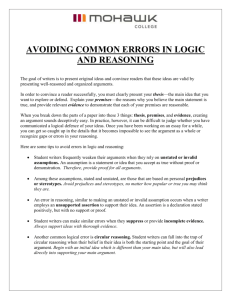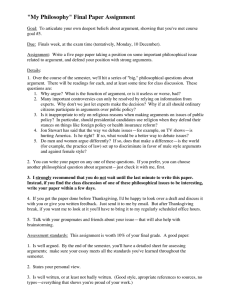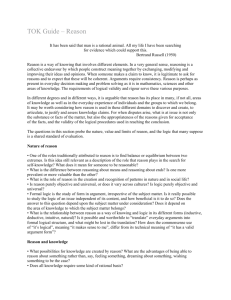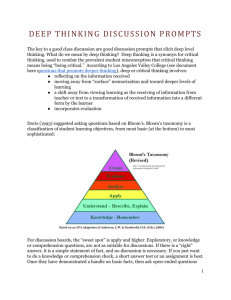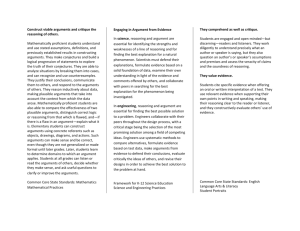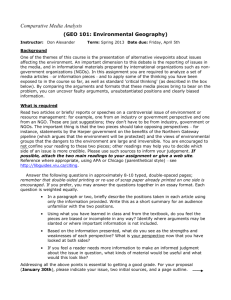Inductive Reasoning
advertisement
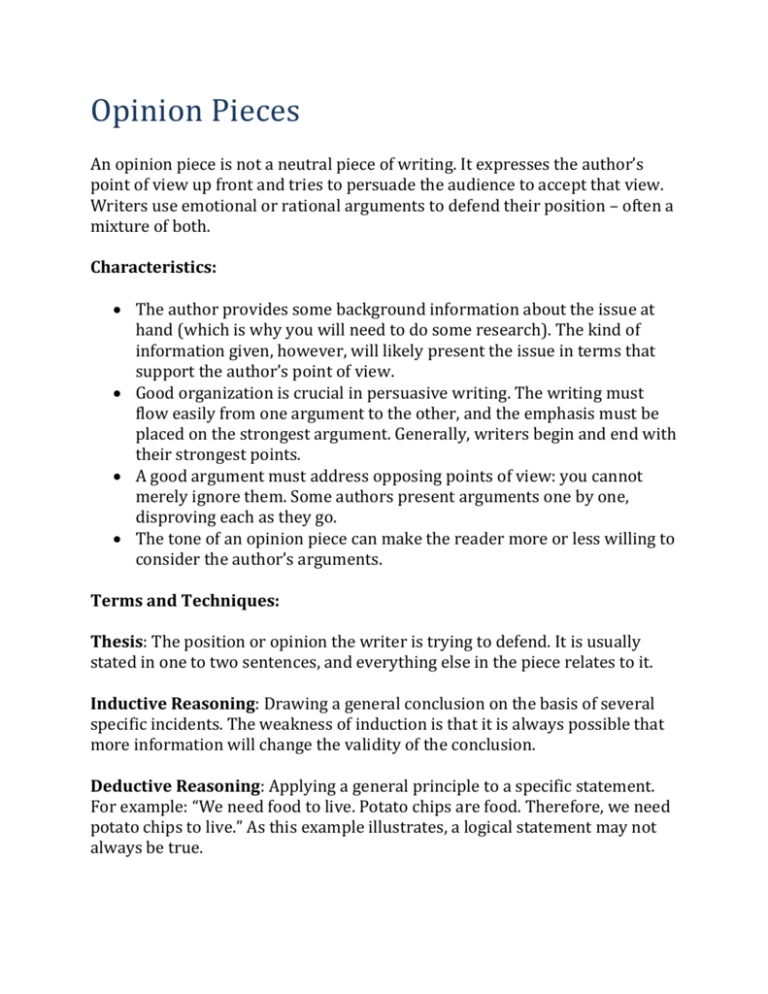
Opinion Pieces An opinion piece is not a neutral piece of writing. It expresses the author’s point of view up front and tries to persuade the audience to accept that view. Writers use emotional or rational arguments to defend their position – often a mixture of both. Characteristics: The author provides some background information about the issue at hand (which is why you will need to do some research). The kind of information given, however, will likely present the issue in terms that support the author’s point of view. Good organization is crucial in persuasive writing. The writing must flow easily from one argument to the other, and the emphasis must be placed on the strongest argument. Generally, writers begin and end with their strongest points. A good argument must address opposing points of view: you cannot merely ignore them. Some authors present arguments one by one, disproving each as they go. The tone of an opinion piece can make the reader more or less willing to consider the author’s arguments. Terms and Techniques: Thesis: The position or opinion the writer is trying to defend. It is usually stated in one to two sentences, and everything else in the piece relates to it. Inductive Reasoning: Drawing a general conclusion on the basis of several specific incidents. The weakness of induction is that it is always possible that more information will change the validity of the conclusion. Deductive Reasoning: Applying a general principle to a specific statement. For example: “We need food to live. Potato chips are food. Therefore, we need potato chips to live.” As this example illustrates, a logical statement may not always be true. Facts: Statements that can be proved through direct observation or experience. Emotional Appeals: Technique used by writers to sway the emotions of their audience. Opinions: Statements that may or may not be supported by facts, but which cannot usually be proved.
